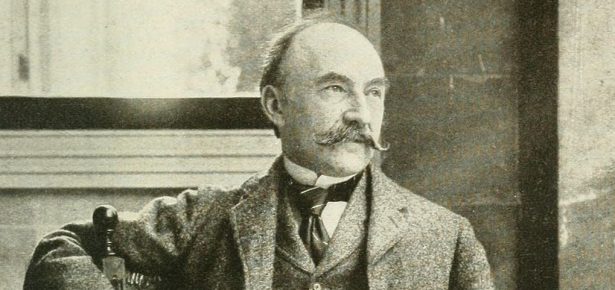

My daughter is taking an undergraduate course in Shakespearean theatre this semester, and one of her foundation readings is Elinor Fuchs’s influential short essay, ‘E.F.’s Visit to a Small Planet: Some Questions to Ask a Play’. Having spent long periods over several years on a small planet of my own, Thomas Hardy’s Egdon Heath, this essay caught my eye. It takes the form of a checklist of primary questions students might or should ask of the space-time dynamics, social structure, and patterns of change in a play. ‘The stage world,’ Fuchs writes, ‘never obeys the same rules as ours, because in its world, nothing else is possible besides what is there: no one else lives there; no other geography is available; no alternative actions can be taken’.
The Return of the Native is the most overtly theatrical novel of a writer whose artistic instincts were theatrical, and for whom the world, always intensely seen, is the more poetically charged when it is also dramatically rendered. Hardy’s most compelling images are so often dependent on the striking, even startling, situations that produce them. They flare into a strange life of their own, vivid and mobile, like the faces of the heathfolk around their bonfire on the fifth of November.
That memorable fire is set on the topmost point of the highest peak on the heath, a spot that commands ‘a horizon enclosing a tract of far extent’ (24). But the instant the thirty-foot-wide pyramid of furze leaps into flame the heathfolk can no longer see anything ‘beyond its influence’ (26). This is the world of the novel in epitome: a radiant space surrounded by a ‘vast abyss’ (26) of nothing; an artificially lit open-air stage surrounded by ‘wild regions of obscurity’ to an unknown extent.
And indeed, when The Return of the Native first appeared in 1878, there was no other geography, real or invented, to imagine beyond what we see in front of us. This was long before Hardy’s Wessex existed, so the map that was printed as the frontispiece to the 1878 first edition was not intended to situate Egdon anywhere. Hardy had used a rough version of it to plan the novel, and he kept it beside him when he was writing, for understandable reasons: to position natural features, buildings, and pathways, roads and highways; work out routes, meeting places, orientations, and outlooks; and calculate distances (in miles and fractions of miles), directions, and durations (the time taken to get from one point to another).
The novel is very specific about distances and directions, but they function principally to position places and characters in relation to each other on the heath, and not to position the heath in relation to the world around it, except cursorily. In this spirit Hardy’s sketch map is somewhat disorienting at first, until you realize that it does not include the cardinal points of the compass and does not follow the cartographic convention of aligning north and south with the top and bottom of the page, but rotates them 90° counter-clockwise, so that the top edge faces east.
In this way (and with the elemental mises-en-scène of Lear and Wuthering Heights in mind) Hardy can convey his heroine’s paralyzing feelings of confinement and isolation in a landscape that is also, to her, terrifyingly open and expansive. As time went on, however, the heath became increasingly hemmed in by the bustling Wessex of Hardy’s other novels, stories and poems, and by the more and more numerous ‘searchers for scenery’ who demanded to know exactly where Egdon Heath was. You can find their story in the forthcoming Cambridge Edition of The Return of the Native.
Latest Comments
Have your say!